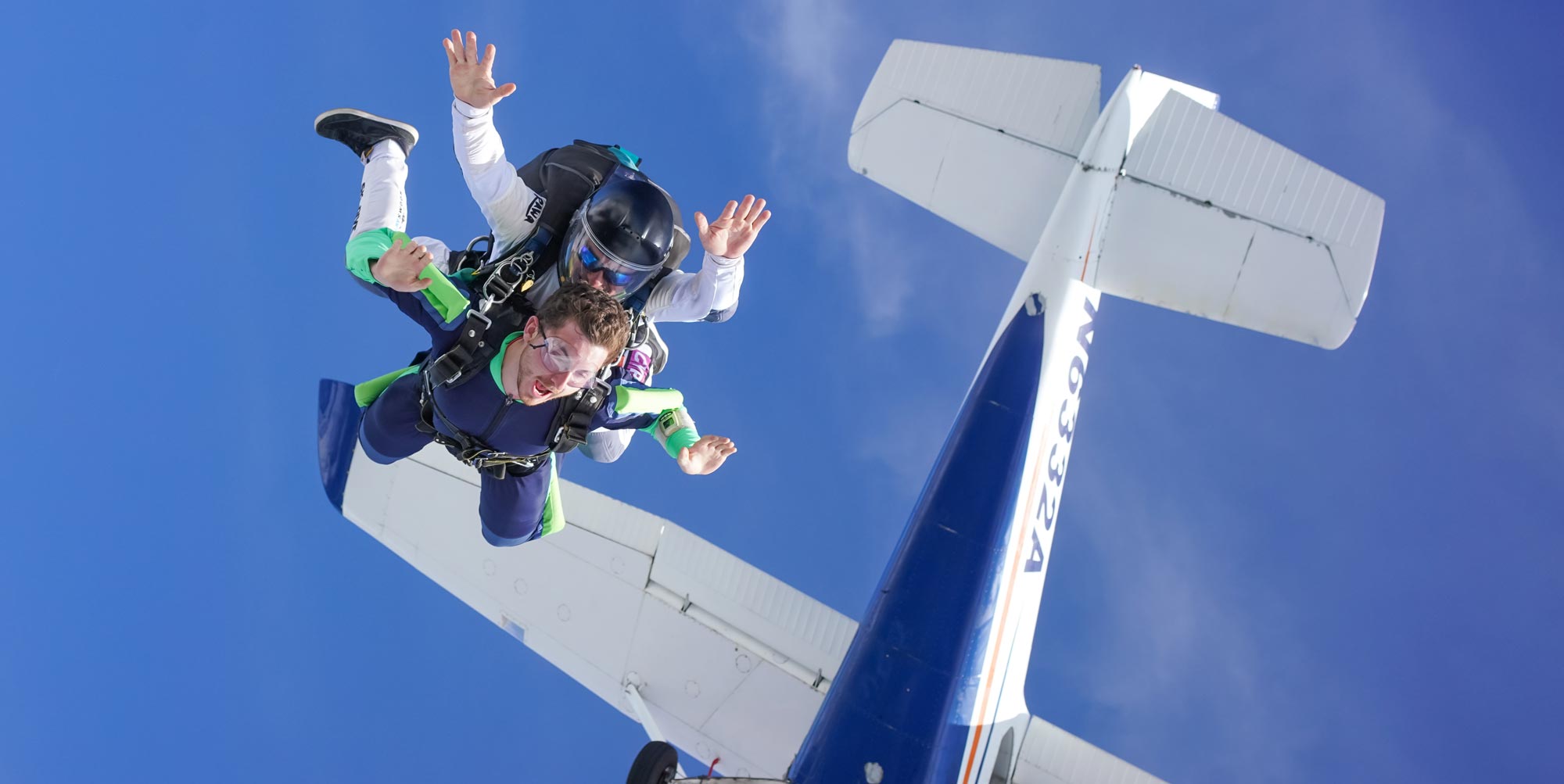Is Skydiving Safe?
Skydiving
Posted by: Long Island Skydiving Center 6 months ago
Going skydiving for the first time raises a variety of feelings, the least of which is most likely not fear. It’s normal to feel some anxiety around jumping out of an airplane — it’s not a natural thing to do! But when it comes down to the facts, is skydiving safe? And if you’re going to jump tandem, how safe is skydiving with an instructor?
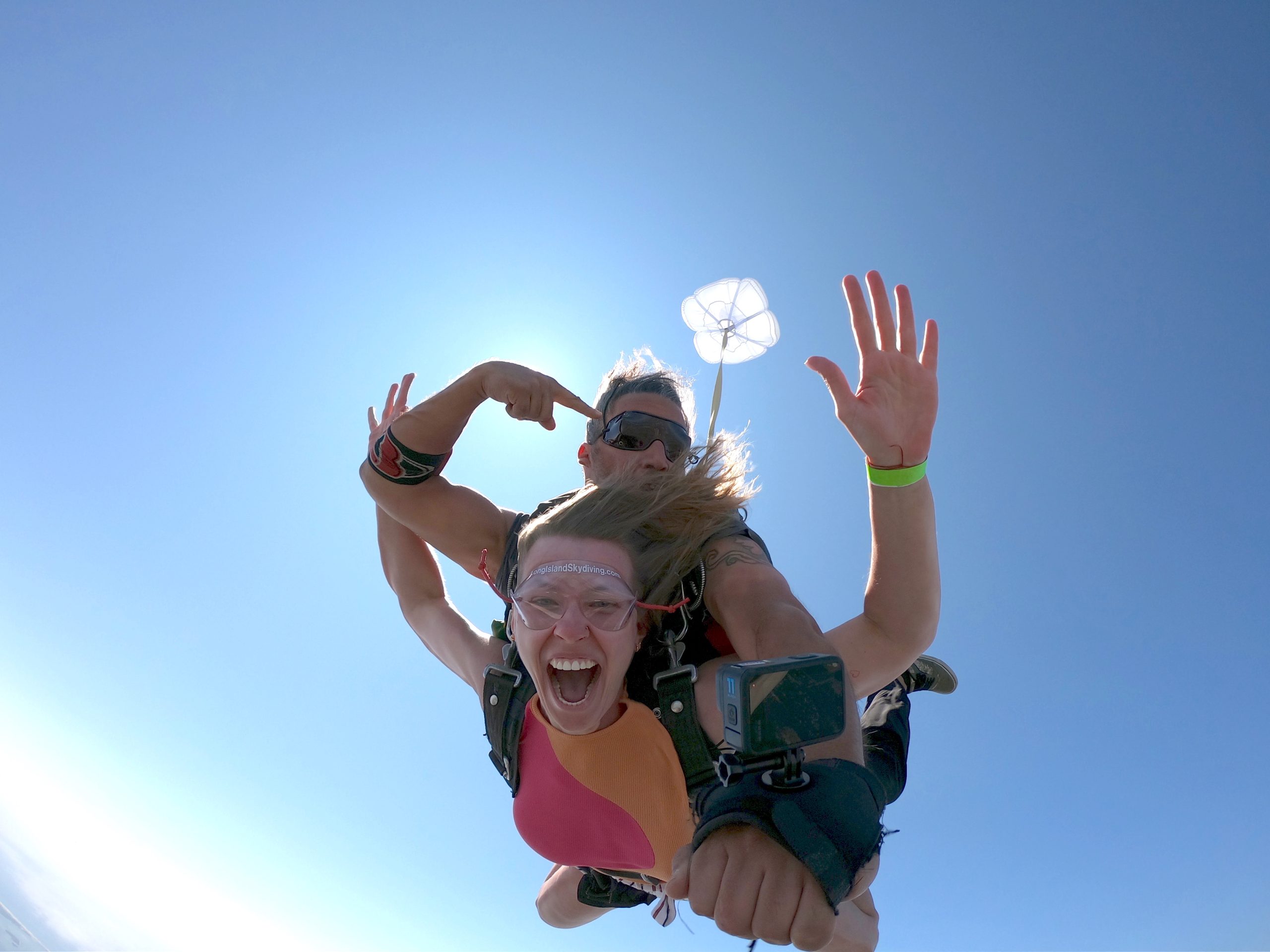
The matter of skydiving safety is more complicated than a simple yes or no answer. Let us break it down for you so that you can see just how committed to being as safe as possible we are here at Long Island Skydiving Center.
Industry Compliance
First and foremost, Long Island Skydiving Center prioritizes the industry standards set forth by the United States Parachute Association (USPA). Since 1946, when the USPA was established, the organization has been focused on developing, refining and enforcing regulations and safety guidelines to which all member dropzones must adhere. They track and report data and trends, and keep pace with our rapidly growing industry to keep on the cutting edge of the sport.
According to the USPA, there were approximately 3.9 million jumps made in 2022, 20 of which resulted in a fatality. This is a rate of 0.51 fatalities per 100,000 jumps, or about 1 per 200,000. It’s important to note that the tandem skydiving fatality rate is even lower. On average, over the past 10 years, there has been 1 fatality per 500,000 jumps.
Looking at USPA report numbers over the last 20 years, it’s clear that skydiving safety is an industry-wide priority:
| Calendar Year | US Skydiving Fatalities | Estimated Annual Jumps | Fatalities / 100K jumps |
| 2022 | 20 | 3.9 million | 0.51 |
| 2017 | 24 | 3.2 million | 0.75 |
| 2012 | 19 | 3.1 million | 0.61 |
| 2007 | 18 | 2.5 million | 0.72 |
| 2002 | 33 | 2.6 million | 1.27 |
Tandem skydiving gear manufacturers also have their own set of criteria that must be met in order to utilize their equipment for tandem jumps, and Long Island Skydiving Center complies with those regulations as well. These companies dedicate countless hours and resources into research and development, and their rules are strict (as they should be).
But that’s just the start. At Long Island Skydiving Center, we go above and beyond the baseline rules and regulations to ensure that we are providing the highest standard of safety and care to every one of our customers.
Instructor Training Protocols
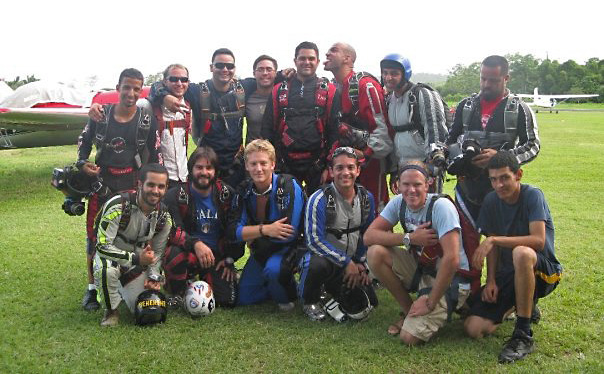
We carefully handpick every one of our team members to ensure they are the right person for the job.
Every tandem instructor completes an extensive training and certification program prior to achieving their coveted instructor title. In order to even consider becoming a tandem instructor, a skydiver must, at a minimum:
- Be 18 years of age
- Log 500 jumps
- Have 3 years experience in the sport
- Have a USPA D-license or foreign equivalent
- Hold a Coach rating
- Have an FAA Class III Flight Medical Certificate or foreign equivalent
And that’s just to enter the USPA tandem instructor rating certification program. Once they qualify for the training, they then participate in intense ground instruction, in-air skills practice, and written and practical testing before they can be a certified tandem instructor. Furthermore, the tests are administered using both the USPA and gear manufacturer standards.
Even once they have become a tandem instructor and are hired by us, instructors are required to participate in ongoing education and skill refresher courses. Instructors must attend an annual Safety Day presentation, regularly pass a Federal Aviation Administration (FAA) medical exam, and meet currency requirements that affirm they are up to date on important information and physical ability.
Being a skydiving instructor is no joke! Your safety is the number one priority, and all of our instructors are trained to take that responsibility to heart.
Equipment Maintenance & Inspection
You can’t skydive without a parachute. Or, more accurately, you can’t skydive twice without a parachute. The parachute system is arguably the most important element of any skydive. Even if everything else goes wrong, the gear is equipped with a small computer called an AAD (Automatic Activation Device) that will automatically deploy your reserve parachute.
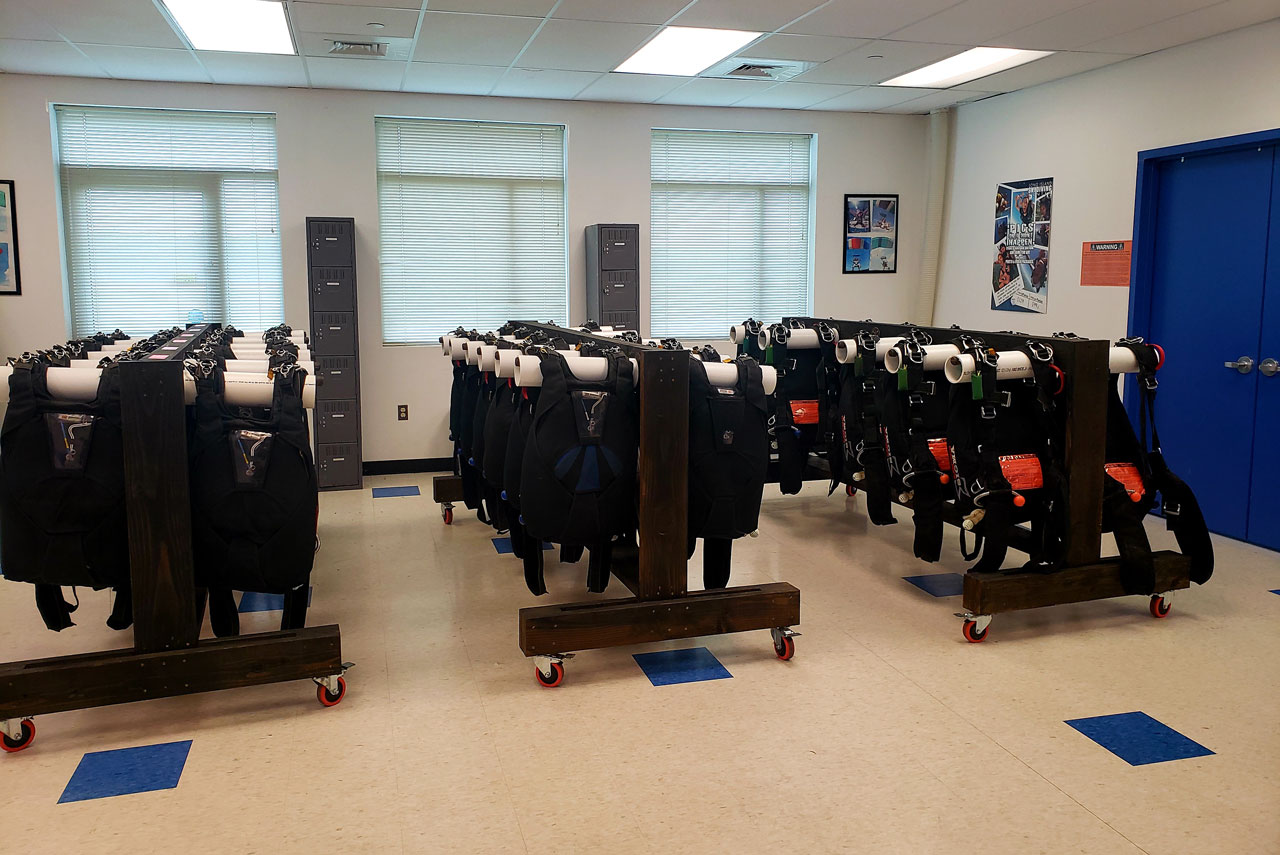
It’s imperative that every piece of gear is regularly inspected and maintained to the highest degree. Any gear that we purchase is rigorously tested by the manufacturer before we receive it, but that’s only a baseline. Once it’s in rotation, we closely monitor all of our gear for wear and tear that could compromise its integrity.
Long Island Skydiving Center adheres to all recommended inspection cycles, and we go above and beyond with our equipment testing. Anyone employed to pack parachutes is trained in how to identify possible failures or malfunctions. This means that every single time the parachute is jumped and then packed, it has highly-trained eyes checking it over for any issues.
We also have FAA-certified riggers on site who inspect, test, and maintain our gear to world-class standards. These riggers not only complete our scheduled reserve repacks and inspections, they are also on call to answer any gear-related questions and address issues that arise during the jump day.
And this obsession with maintenance doesn’t stop at our gear. Our airplane and facilities receive the same TLC that keeps everything (and everyone) running as safe and sound as possible.
Skydiving Weather Considerations
Sunny skies, warm weather, and a nice, easy breeze. Perfect skydiving weather. But, as we all know, Mother Nature isn’t always in the best mood. And, for safety reasons, skydiving is only possible in certain conditions.
Of course, there’s a range of weather that’s suitable to skydive in, even if it is less desirable (we’re looking at you, winter), but some weather conditions are an absolute no-go for getting in the air. Rain, high winds, and jumping through clouds are all conditions that we won’t jump in. Not only is it uncomfortable and less enjoyable, it’s also not safe – so much so that the USPA and FAA have developed limits for jumping in wind and cloud coverage.
Low visibility from clouds opens up the possibility for in-air collisions between skydivers or other aircraft in the sky. We don’t have to tell you why that would make for a bad day for everyone involved. And jumping in high wind can lead to some pretty harrowing parachute rides that just aren’t worth the risk. Landing safely is one of the most important parts of the skydive, and we don’t need the wind interfering with that priority!
There’s a saying in skydiving that goes, “it’s better to be on the ground wishing you were in the air than in the air wishing you were on the ground,” and we use that as a mantra for making weather-related decisions. Skydiving is supposed to be fun, and there’s nothing enjoyable about fearing for your life due to weather conditions!
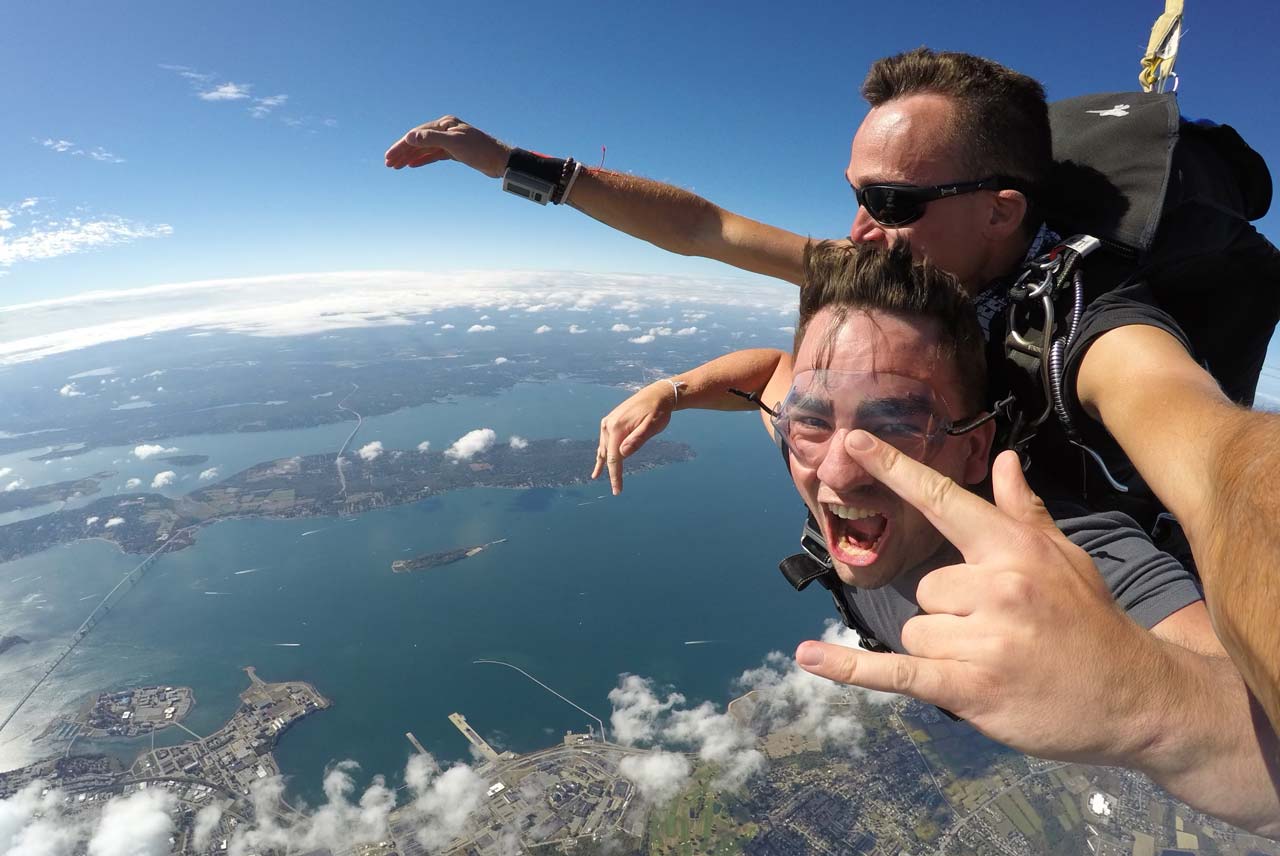
Emergency Preparedness
Just because we are laser-focused on safety doesn’t mean that we can assume nothing will ever go wrong. Part of being as safe as possible is being prepared for an emergency situation. Even if nothing ever happens, being ready to respond to an incident makes us all more aware in everything that we do.
Every instructor that works at our dropzone has participated in extensive emergency procedure training. Aircraft emergency procedures, equipment malfunction knowledge, and emergency response skills are all a huge part of the certification process. The same goes for the licensing program for pilots. Additionally, every one of our ground staff members are trained on handling emergencies so that our entire operation will run like a well-oiled machine in the event our emergency response systems need to kick in.
And it’s not a one-and-done situation. We are constantly updating our procedures and response plans as necessary. Briefings happen on a regular basis to ensure everyone is on the same page, and formal training occurs regularly.
We believe in being prepared for anything.
Skydiving might be considered a risky activity, and it certainly qualifies as an extreme sport. But that doesn’t mean that there aren’t ways to make it as safe as possible. Here at Long Island Skydiving Center, we regularly attend industry forums and collaborate with safety experts.
Have questions about skydiving or our safety protocols? Get in touch! We are passionate about safety and professionalism – and proud that it shows in our customer reviews! And when you’re ready to take the leap, come jump with us! Blue skies!
Categories:
You May Be Interested In:
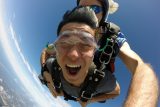
Can I Bring My Own GoPro Skydiving?
2 days ago by Long Island Skydiving Center

Should I Go Skydiving?
1 week ago by Long Island Skydiving Center

3 Reasons Why Bucket List Adventures Make The Best Gifts
4 weeks ago by Long Island Skydiving Center

Skydiving Weight Limit in New York
4 weeks ago by Long Island Skydiving Center
